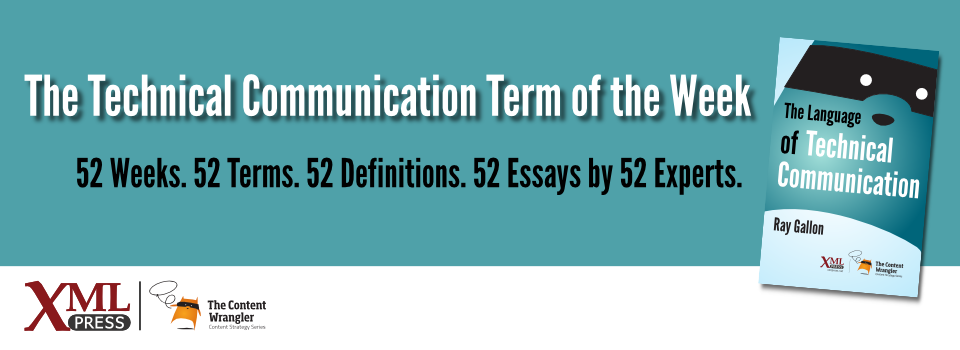What is it?
Specifications for eLearning training materials, including file formats, hardware and software requirements, query and statement structures, and protocols for tagging, citing, and attributing material. Examples of eLearning and mLearning standards include the former AICC (Aviation Industry CBT Committee), the current SCORM (Shareable Content Object Reference Model), and the emerging xAPI (the Experience Application Programming Interface).
Why is it important?
By conforming to standards, eLearning content can be created and packaged so as to be shareable across various learning management systems. Standards make eLearning material more available and discoverable, make launch and access more reliable, make tracking and data capture more flexible, and ensure that content is accessible to those with physical or mental challenges
Why does a technical communicator need to know this?
eLearning and mLearning standards were originally developed so that computer-based learning materials could be linked to electronic reporting systems. As the eLearning field has grown, the standards have evolved to support more robust interoperability. With eLearning and mLearning quickly moving beyond traditional courses deployed via desktop or mobile devices, an understanding of standards is critical. Technical communicators developing instructional content – from traditional instruction to video material to serious learning games – will need to understand and adhere to industry specifications.
Learners expect a seamless, unified experience regardless of device or platform. Clients expect content that will run and launch regardless of system. Organizations need reliable data that show performance and increase understanding.
Understanding these standards is vital to ensuring that content is accessible to everyone regardless of ability. A number of authoring, document, and presentation tools now offer help for making material accessible. While there are clearly stated minimum acceptable standards, as the field of design thinking evolves, the idea of compassionate design – rather than just designing for compliance – is gaining interest, so a good working knowledge of accessibility is essential.
Finally, an understanding of these specifications helps to ensure that learning material created by technical communicators can be located and accessed across various devices by any learner, with activities tracked and recorded across systems. Increased interest in – and capability for – data capture and reporting that can connect learning activities to job performance makes standards that support interoperability even more critical.

